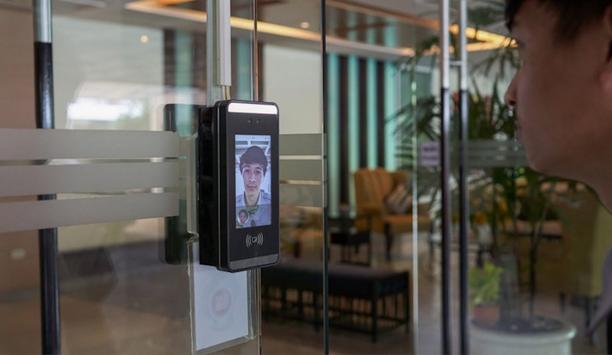The challenge
A company doesn’t get to be the size and significance of Ryerson without focusing on efficiency. Ryerson, a leading distributor and processor of metal, based in Chicago, is guided by three fundamental principles, one of which is an intense focus on operating efficiency. Perhaps that’s why Thomas Wojtowicz, Ryerson’s Senior Analyst and Engineer, looks with pride on the company’s decision to print its ID cards in-house.
Ryerson, whose products are found in everything from street lamps to automobiles, has used ID cards to track time and attendance for hourly employees since 1999. A bar code transmits data when an employee reports to work and swipes the card through a data collection terminal directly linked to a Ceridian time and attendance system. “Our operating supervisors can see exactly who has reported for work,” said Wojtowicz.
Until 2006, the company purchased ID cards from a third party vendor, sending employees’ photos, barcode numbers and locations to the vendor via e-mail. The vendor then manufactured the ID cards and sent them back. “When the company first began using ID cards, I ordered two for every employee,” said Wojtowicz. “After some time, the number of lost or damaged cards increased significantly. Eventually I had to replace about 30 percent of the cards.” At the same time, the cost of the cards began to increase, and despite the fact that Ryerson needed the cards quickly, employees sometimes would wait two or three days for them.
“We were not in the ID card manufacturing business,” admitted Wojtowicz, “but we needed to bite the bullet and start producing our own cards. Cost was our main motivating factor. We knew it would be more efficient in the long-term.”
Solution Found
In 2006, Wojtowicz brought the service inside and purchased a FARGO Persona C30 Card Printer. A Google search directed him to FARGO products, which he evaluated via the www.fargo.com website. Together with advice from the FARGO representative in his area, Card Imaging, he selected the Persona C30 printer because of its simplicity.
Persona C30 printers use direct-to-card printing technology that transfers images directly onto the cards. By heating a print ribbon beneath a thermal printhead, this dye sublimation process can produce more than 16.7 million colours. Yet Persona C30 printers are easy to operate, with an all-in-one disposable ribbon cartridge that also contains a cleaning roller. Wojtowicz also chose FARGO's user-friendly Build-A-Badge software.
“We considered piggybacking with the outside security firm that implemented our door access system, but we didn’t need all of the robust features associated with that software,” Wojtowicz said.
Wojtowicz anticipates moving toward an access control system in the future, at which time Ryerson may upgrade to a smart card instead of its current bar coded cards |
“We chose FARGO equipment and pay 45 cents for a blank ID card, maintaining our own database on the ID card software. Today’s technology makes it easy to use databases with just a rudimentary understanding of a PC.”
Wojtowicz anticipates moving toward an access control system in the future, at which time Ryerson may upgrade to a smart card instead of its current bar coded cards. ID cards at Ryerson currently are printed by personnel in the Industrial Engineering Group, which handles the time an attendance application with support from the IT organisation.
Results
“While ease of use was important, cost was the number one reason for choosing to print our own ID cards,” he said. “Time and turnover were also factors. Today, we are able to produce cards on an ‘as needed’ basis as requests come in for replacement cards or we roll out new time and attendance systems to other Ryerson locations. If we need to make a card on the spot, we can.”
“A unique safety issue in our industry is plant evacuation,” said Wojtowicz. “If there is ever an accident in our warehouse, we have a record of who is on site and can account for everyone.” Keeping track of those in a building can be a major task, given the size of the Ryerson facilities. In Chicago alone, there are 1.2 million square feet of space.
Ryerson also wants to know when an employee is off site, even for temporary training sessions or physician appointments. “Getting this data is critical for safety,” Wojtowicz said. In the future, employees who transition from job to job within a facility also will swipe their card through a data collection terminal, letting management know they are working in a different area. As with any company, an internal ID card system allows for immediate deactivation of an ID card when an employee is terminated, as well.
Bringing Ryerson’s ID card production in-house has reduced the cost of each card from as high as $14 with an outside vendor to approximately 90 cents with in-house production |
Safety is an important issue, not only for employees, but also for the visitors who take plant tours. No longer content with “Hello, my name is” nametags, Wojtowicz initiated a programme to log in visitors with generic ID cards containing a bar code number, which is recorded in a temporary log. The cards are swiped at data collection terminals at the entrance and exit of the warehouse, providing online, real-time reports of who is in the buildings.
Ryerson’s use of ID cards provides more than security for employees. It ensures the creation of an accurate paycheck for them. “With time and attendance information tracked through an ID card, we know we are compensating employees based on accurate payroll information, thus creating an accurate paycheck for them,” said Wojtowicz. “This gives employees incentive to accept the ID card programme.”
“Because we’re using ID cards ultimately to transmit information to payroll, we’re applying internal pay rounding policies, which ensures conformance to state and federal payroll regulations,” he said. Time and attendance applications have multiple pay policies loaded in, including income tax payroll information from surrounding states and details ensuring compliance with sometimes complex union contracts. “We couldn’t be that specific without an ID card time and attendance system,” he said. “The bar coded ID cards also eliminate rounding errors sometimes inherent in manual systems.”
Ryerson is a rapidly growing company, and the need for ID cards will only increase, according to Wojtowicz. Today, there are 1,000 employees in the time and attendance database, each holding two ID cards. The programme is rolling out to additional locations, most with 100 to 200 employees. Ryerson has about 100 stocking locations in the United States alone and is well represented around the world. In 2005, it acquired Integris Metal, adding employees and locations in the process.
Bringing Ryerson’s ID card production in-house has reduced the cost of each card from as high as $14 with an outside vendor to approximately 90 cents with in-house production, and the turnaround time for creating or replacing cards went down significantly. In addition, safety features were enhanced, and payroll compliance improved dramatically.
In short, ID cards are helping to support Ryerson’s “intense focus on operating efficiency.”












